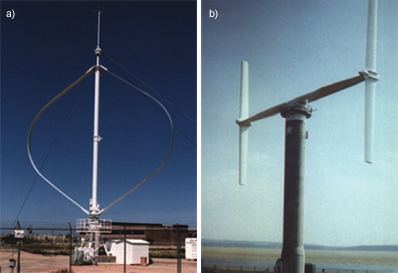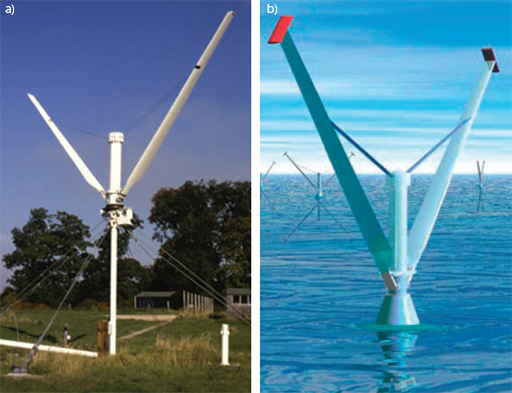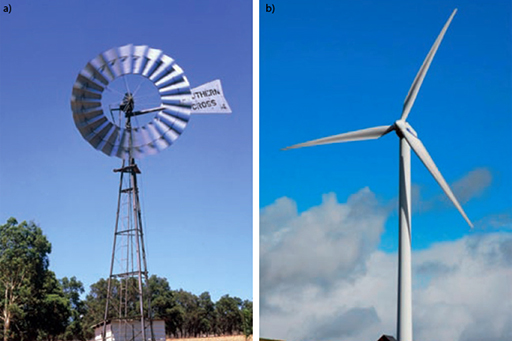3 Wind turbine types
Most modern wind turbines come in one of two basic configurations:
1. Horizontal axis wind turbines (HAWTs). These are predominantly of the ‘axial flow’ type, i.e. the rotation axis is in line with the wind direction. They range in size from very small machines that produce a few tens or hundreds of watts to very large turbines producing 8 MW or more.
Multi-bladed wind turbines as in figure 3a produce high torque at low rotor speeds and have been used since the nineteenth century for water pumping on farms.
Modern wind turbines as in figure 3b usually have two or three blades and work at much higher rotational speeds, making them attractive for electricity generation in figure 3b. Their rotors superficially resemble aircraft propellers, their design driven mainly by aerodynamic considerations.
2. Vertical axis wind turbines (VAWTs). These are generally of the ‘cross flow’ type, i.e. the rotation axis is perpendicular to the wind direction. They can harness winds from any direction without the need to reposition the rotor when the wind direction changes. Despite this advantage, VAWTs have found little commercial success to date, in part due to issues with power quality, cyclic loads on the tower systems and the lower efficiency of some VAWT designs.

The modern VAWT evolved from the ideas of the French engineer, Georges Darrieus, whose name describes one type of VAWT he invented in 1925. This device, which resembles a large eggbeater, has curved blades, with a symmetrical aerofoil cross-section, attached to the top and bottom of a vertical shaft in Figure 4a.
However, the curved blades of a Darrieus VAWT can be difficult to manufacture, transport and install, so straight-bladed VAWTs have been developed. These include the ‘H’-type vertical axis wind turbine (H-VAWT) shown in Figure 4b, consisting of a tower capped by a hub to which is attached two or more horizontal cross arms that support the straight, upright, aerofoil blades; and the ‘V’-type vertical axis wind turbine (V-VAWT) shown in figure 5a which has straight aerofoil blades attached at one end to a hub on a vertical shaft. Figure 5b below shows a conceptual design for a multi-megawatt offshore V-VAWT.

In the next section you’ll look in more detail at how wind turbines harness the wind.

